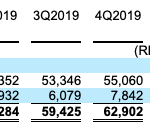No single question bedevils American energy and environmental policy more than nuclear waste. No, not even a changing climate, which may be a wicked problem but nonetheless receives a great deal of counter-bedeviling attention.
It’s difficult to paint the picture with a straight face. Let’s start with three main elements of the story.
First, nuclear power plants in the United States generate about 2,000 metric tons of nuclear waste (or “spent fuel”) per year. Due to its inherent radioactivity, it is carefully stored at various sites around the country.
Second, the federal government is in charge of figuring out what to do with it. In fact, power plant operators have paid over $40 billion into the Nuclear Waste Fund so that the government can handle it. The idea was to bury it in the “deep geological repository” embodied by Yucca Mountain, Nevada, but this has proved politically impossible. Nevertheless, $15 billion was spent on the scoping.
Third, due to the Energy Department’s inability to manage this waste, it simply accumulates. According to that agency’s most recent data release, some 80,000 metric tons of spent fuel—hundreds of thousands of fuel assemblies containing millions of fuel rods—is waiting for a final destination.
And here’s the twist ending: those nuclear plant operators sued the government for breach of contract and, in 2013, they won. Several hundred million dollars is now paid out to them each year by the U.S. Treasury, as part of a series of settlements and judgments. The running total is over $8 billion.
I realize this story sounds a little crazy. Am I really saying that the U.S. government collected billions of dollars to manage nuclear waste, then spent billions of dollars on a feasibility study only to stick it on the shelf, and now is paying even more billions of dollars for this failure? Yes, I am.
Fortunately, all of the aggregated waste occupies a relatively small area and temporary storage exists. Without an urgent reason to act, policymakers generally will not.
While attempts to find long-term storage will continue, policymakers should look towards recycling some of this “waste” into usable fuel. This is actually an old idea. Only a small fraction of nuclear fuel is consumed to generate electricity.
Proponents of recycling envision reactors that use “reprocessed” spent fuel, extracting energy from the 90% of it leftover after burn-up. Even its critics admit that the underlying chemistry, physics, and engineering of recycling are technically feasible, and instead assail the disputable economics and perceived security risks.
So-called Generation IV reactors come in all shapes and sizes. The designs have been around for years—in some respects, all the way back to the dawn of nuclear energy—but light-water reactors have dominated the field for a variety of political, economic, and strategic reasons. For example, Southern Company’s twin conventional pressurized water reactors under construction in Georgia each boast a capacity of just over 1,000-megawatt (or 1 gigawatt), standard for Westinghouse’s AP 1000 design.
In contrast, next-generation plant designs are a fraction of the size and capacity, and also may use different cooling systems: Oregon-based NuScale Power’s 77-megawatt small modular reactor, San Diego-based General Atomics’ 50-megawatt helium-cooled fast modular reactor, Alameda-based Kairos Power’s 140-megawatt molten fluoride salt reactor, and so on all have different configurations that can fit different business and policy objectives.
Many Gen-IV designs can either explicitly recycle used fuel or be configured to do so. On June 3, TerraPower (backed by Bill Gates), GE Hitachi, and the State of Wyoming announced an agreement to build a demonstration of the 345-megawatt Natrium design, a sodium-cooled fast reactor.
Natrium is technically capable of recycling fuel for generation. California-based Oklo has already reached an agreement with Idaho National Laboratory to operate its 1.5-megawatt “microreactor” off of used-fuel supplies. In fact, the self-professed “preferred fuel” for New York-based Elysium Industries’ molten salt reactor design is spent nuclear fuel and Alabama-based Flibe Energy advertises the waste-burning capability of its thorium reactor design.
Whether advanced reactors rise or fall does not depend on resolving the nuclear waste deadlock. Though such reactors may be able to consume spent fuel, they don’t necessarily have to. Nonetheless, incentivizing waste recycling would improve their economics.
“Incentivize” here is code for “pay.” Policymakers should consider ways that Washington can make it more profitable for a power plant to recycle fuel than to import it—from Canada, Kazakhstan, Australia, Russia, and other countries.
Political support for advanced nuclear technology, including recycling, is deeper than might be expected. In 2019, the Senate confirmed Dr. Rita Baranwal as the Assistant Secretary for Nuclear Energy at the Department of Energy (DOE). A materials scientist by training, she emerged as a champion of recycling.
The new Biden administration has continued broadly bipartisan support for advanced nuclear reactors in proposing in its Fiscal Year 2022 Budget Request to increase funding for the DOE’s Office of Nuclear Energy by nearly $350 million. The proposal includes specific funding increases for researching and developing reactor concepts (plus $32 million), fuel cycle R&D (plus $59 million), and advanced reactor demonstration (plus $120 million), and tripling funding for the Versatile Test Reactor (from $45 million to $145 million, year over year).
In May, the DOE’s Advanced Research Projects Agency-Energy (ARPA-E) announced a new $40 million program to support research in “optimizing” waste and disposal from advanced reactors, including through waste recycling. Importantly, the announcement explicitly states that the lack of a solution to nuclear waste today “poses a challenge” to the future of Gen-IV reactors.
The debate is a reminder that recycling in general is a very messy process. It is chemical-, machine-, and energy-intensive. Recycling of all kinds, from critical minerals to plastic bottles, produces new waste, too. Today, federal and state governments are quite active in recycling these other waste streams, and they should be equally involved in nuclear waste.
Powered by WPeMatico












